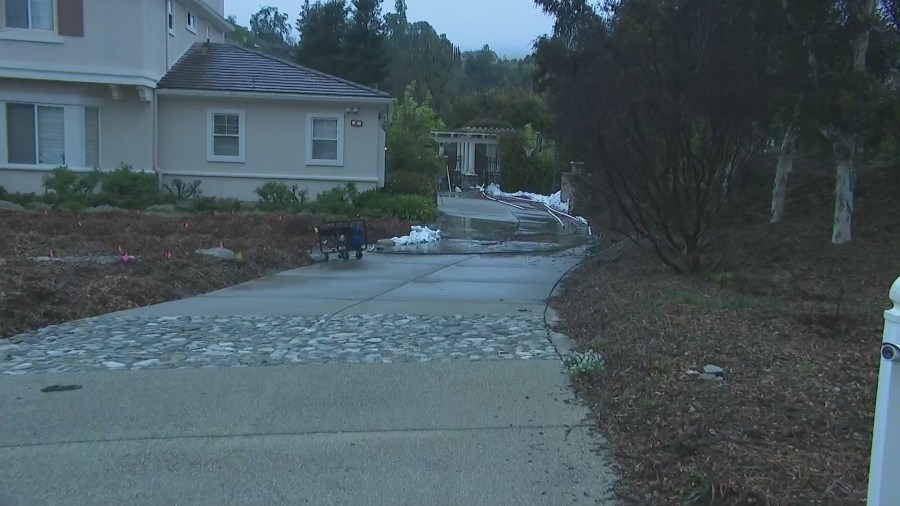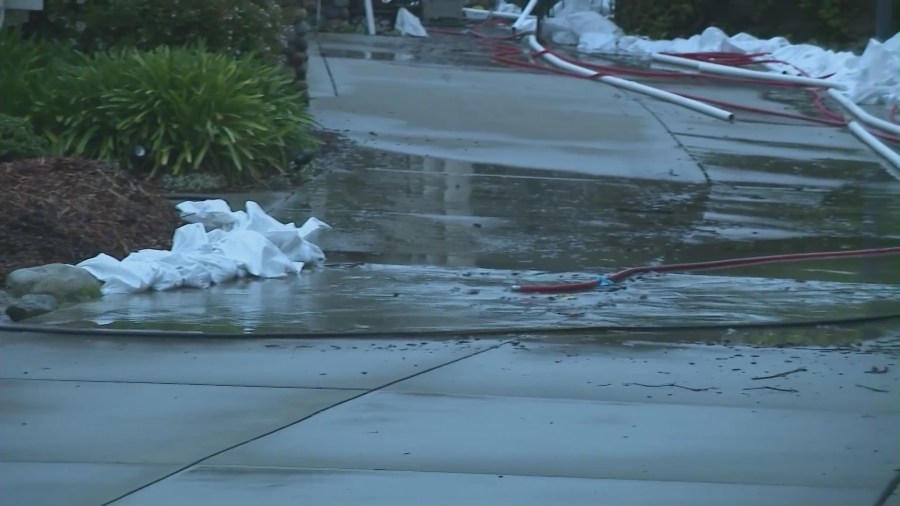Claremont residents are scrambling to protect their homes amid groundwater that is seeping up to the surface.
What started as a small trickle has grown into a steady flow, residents of the Stone Canyon neighborhood told KTLA. Residents of the neighborhood were informed by the city of abnormal groundwater seepage on Monday.
Sandbags and water pumps have been put in place to help mitigate the effects of the flooding. A spokesperson for the city of Claremont told KTLA that at least 25 to 27 homes are affected.
It began earlier this month, but it’s only grown in intensity and scale, affecting more and more homes. The city says that 20 feet of water was let go from the San Antonio Dam, which lies just two miles from the neighborhood, over a 15 day period.
“There are a lot of factors that are causing this groundwater to bubble up,” Claremont Public Information Officer Bevin Handel said.
“There’s the release of the water from the dam because it’s reached a certain level, there are spreading grounds that are made to actually push the water and bring it down to the groundwater, and we also have snowpack that’s melting, and we have super saturated groundwater from all of the storms we’ve had in the last few months.”
Residents are concerned that the water will cause structural damage to their homes and are wary of possible sinkholes or cracks in the foundations of their homes.
“The calculated mistake here is that when you have a super saturated ground from massive rainstorms, you don’t release 20 feet of dam water in 15 days,” Claremont resident Vikas Mehta said.
The Six Basins Watermaster is conducting spreading operations to recharge groundwater levels from water released from the dam, according to a city spokesperson.
According to the U.S. Army Corps of Engineers, the flooding is “not explicitly” related to the water release from the San Antonio Dam.
“There has been historically high groundwater in the area, and there are known springs and wet meadows in the neighborhood,” said Dena O’Dell, Public Affairs Chief of the Los Angeles District of the U.S. Army Corps of Engineers. “During this extremely wet winter and given the complex groundwater and geologic conditions, there are multiple sources of water that could be contributing to the current high groundwater situation.”
The Army Corps of Engineers noted that the pool behind the San Antonio Dam rose about 45 feet due to an extended period of abnormally high water inflow, and that water had to be released. They also noted that the groundwater and geologic conditions in the Stone Canyon neighborhood are “complex” and that there are “likely multiple sources of water contributing to the conditions currently being experienced.”
“The San Antonio Dam is operated primarily for flood-risk management purposes and is typically dry,” said O’Dell. “Normal operation holds back water and releases it into the downstream concrete-lined channel which can carry up to 8,000 cubic feet of water per second…current releases have not exceeded 300 cubic feet per second.”
The U.S. Army Corps of Engineers is in communication with the City of Claremont to determine what assistance is still needed to mitigate the rising groundwater.






















